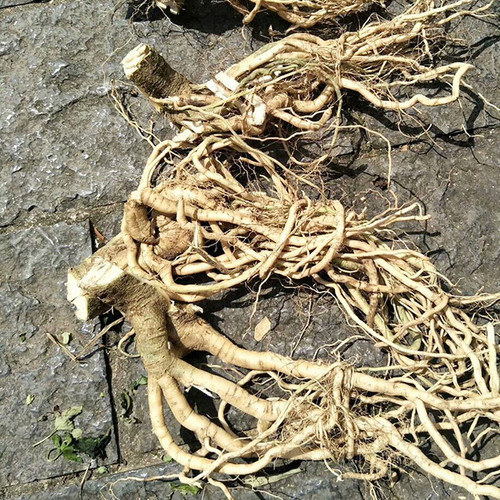Product Overview
Parts used: Dried flower
TCM category: Herbs that invigorate the Blood
TCM nature: Warm
TCM taste(s): Pungent
Meridian affinity: Heart Liver
Scientific name: Carthamus tinctorius
Use of safflowers (Hong Hua) in TCM
Please note that you should never self-prescribe TCM ingredients. A TCM ingredient is almost never eaten on its own but as part of a formula containing several ingredients that act together. Please consult a professional TCM practitionner, they will be best able to guide you.
Preparation: Remove impurities, keep the flower buds and stalks and sieve to remove dust.
Dosage: 3 - 9 grams
Main actions according to TCM*: Moves Stagnant Blood and regulates menses. Relieves pain caused by Blood Stasis.
Primary conditions or symptoms for which safflowers may be prescribed by TCM doctors*: Amenorrhea Dysmenorrhea Sores Carbuncles Abdominal masses
Contraindications*: This herb should not be used by pregnant women.
Common TCM formulas in which safflowers are used*:
For dysmenorrhea or amenorrhea combine safflowers with peach kernels (Tao Ren), dong quai (Dang Gui), motherwort herbs (Yi Mu Cao) and red peony roots (Chi Shao).
For moving and dispersing Blood Stagnation combine safflowers with peach kernels (Tao Ren).
For jaundice, hepatitis, cholecystitis and/or hypochondrial swelling combine safflowers with woad leaves (Da Qing Ye) and peach kernels (Tao Ren).
For irregular menstruation combine safflowers with vaccaria seeds (Wang Bu Liu Xing), dong quai (Dang Gui), szechuan lovage roots (Chuan Xiong) and peach kernels (Tao Ren).
For irregular uterine bleeding due to blood deficiency combine safflowers with lotus stamens (Lian Xu) and dong quai (Dang Gui).
Key TCM concepts behind safflowers (Hong Hua)'s properties
In Traditional Chinese Medicine (TCM), safflowers are plants that belong to the 'Herbs that invigorate the Blood' category. Like the name indicates these herbs tend to stimulate the Blood flow. In TCM they're used to help the circulation of Blood in cardiovascular conditions or menstrual irregularities as well as to treat acute pains caused by Blood Stagnation. They can also be used to treat Blood Stasis in the case of certain tumors, cysts and hardened clots.
Furthermore safflowers are plants that are Warm in nature. This means that safflowers tend to help people who have too much "cold" in their body, although with less effect than a plant that would be Hot in nature. Balance between Yin and Yang is a key health concept in TCM. Those who have too much cold in their body are said to either have a Yin excess (because Yin is Cold in nature) or a Yang deficiency (Yang is Hot in Nature). Depending on your condition safflowers can help restore a harmonious balance between Yin and Yang.
Safflowers also taste Pungent. The so-called "five elements" theory in Chinese Medicine states that the taste of TCM ingredients is a key determinant of their action in the body. Pungent ingredients like safflowers tend to promote the circulations of Qi and body fluids. That's why for instance someone tends to sweat a lot when they eat spicy/pungent food.
The tastes of ingredients in TCM also determine what organs and meridians they target. As such safflowers are thought to target the Heart and the Liver. In addition to regulating blood flow, in TCM the Heart is believed to be the store of the "spirit" which basically refers to someone's vitality. The Liver on the other hand is often referred as the body's "general" because it is in charge of regulating the movements of Qi and body fluids. It also takes a leading role in balancing our emotions.







